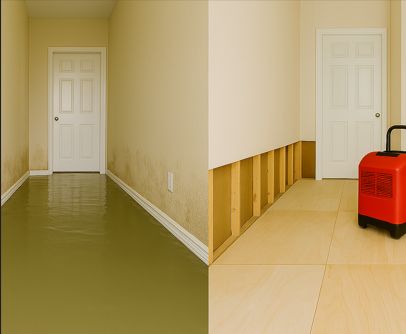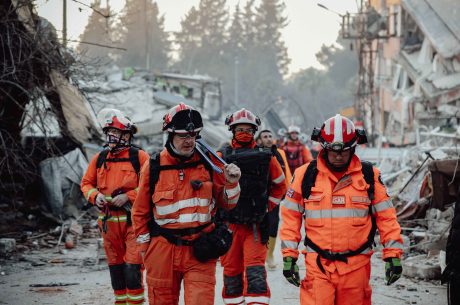
Water damage restoration is a multi-phase process that involves assessing, extracting, drying, sanitizing, and ultimately restoring a property affected by water intrusion. Whether caused by plumbing failures, natural disasters, or appliance leaks, untreated water damage can compromise structural integrity, lead to mold growth, trigger costly repairs, and contribute to decreased property value.
If you find water damage in your property, it’s important to call a professional as soon as possible. At PuroClean of Ft. Lauderdale South, we provide water damage remediation and mold removal services 24/7 in Pembroke Pines, Cooper City, Fort Lauderdale, Miramar, Hollywood, and neighboring cities. You can contact us anytime at (754) 732-8383.
Common Types and Sources of Water Damage
Water damage can occur in several ways, each requiring specific mitigation efforts to prevent further harm to properties and occupants’ health.
Water damage originates from a wide range of sources, including:
- Plumbing Leaks: Burst pipes, sump pump failures, leaking water heaters
- Roof Leaks: Poor drainage or roofing material issues
- Appliance Failures: Water line failures from dishwashers, washing machines, refrigerators, etc.
- Flooding & Storm Damage: Property damage from excessive rain, hurricanes, or rising groundwater
- Sewage Backups: Carrying hazardous contaminants
- HVAC and Condensation Issues: Leading to persistent indoor humidity
- Foundation and Basement Leaks: Undetected leaks can lead to potential mold growth and structural deterioration
Each scenario presents unique risks and requires tailored restoration strategies to prevent long-term damage and health hazards.

Understanding Water Damage Categories
Water is classified into three categories based on its contamination level:
- Category 1 (Clean Water): Safe, minimal health risk (e.g., broken pipes, rainwater)
- Category 2 (Gray Water): Contains some contaminants; can cause illness if untreated
- Category 3 (Black Water): Highly contaminated (e.g., sewage, floodwaters); requires immediate professional cleanup and sanitation
Correct identification of water category is essential for health safety and effective remediation.
Structural and Health Impacts of Water Damage
Unaddressed water damage can result in:
- Rotted wood, weakened drywall, and corroded metal
- Short circuits and electrical hazards
- Mold growth within 24–72 hours
- Poor indoor air quality and respiratory health risks
- Pest infestations (e.g., termites, rodents)
- Lower property value and higher insurance premiums
Financially, water damage can lead to property value loss, expensive reconstruction needs, and insurance complications if not properly documented and addressed.
The Water Damage Restoration Process—From Emergency
to Recovery

- Emergency Response & Inspection: Rapid arrival to assess damage and begin mitigation
- Water Extraction: Removing standing water using industrial pumps and vacuums
- Drying & Dehumidification: Specialized equipment eliminates hidden moisture in walls, flooring, and structural components
- Cleaning & Sanitization: Antimicrobial treatments and disinfectants eliminate bacteria and odors
- Restoration & Repairs: Rebuilding damaged materials and restoring the property to pre-loss condition
The “Science of Drying” process is guided by IICRC standards and supported by tools like moisture meters, infrared cameras, and psychrometric drying systems.
The PuroClean QuickDry System™ uses applied psychrometric science — a proven process that properly manages dehumidification and temperature. This system will effectively and efficiently facilitate drying and help ensure that your water-damaged property is restored.
Why Professional Restoration Matters
Professional restoration providers bring significant advantages:
- Fast response times reduce long-term damage
- IICRC-certified technicians ensure quality and compliance
- Advanced drying techniques and equipment maximize efficiency
- Proper documentation streamlines insurance claims
- Mold prevention safeguards occupant health
- Water Restoration Technician (WRT): Demonstrates knowledge in performing remediation work and an understanding of water damage, its effects, and techniques for drying structures.
- Applied Structural Drying (ASD): Proves expertise in efficiently and effectively drying water-damaged structures and contents, all while ensuring the safety and health of both the workers and the property’s occupants.
The IICRC is one of the most important and influential bodies in our industry, Darren Hudema, PuroClean Director of Training & Technical Services, said.
Prevention Tips for Property Owners
Proactive maintenance helps reduce water damage risks:
- Inspect and service plumbing, appliances, roofs, and gutters regularly
- Install water detection sensors in high-risk areas (e.g., basements, laundry rooms, etc.)
- Grade landscaping to divert water away from the foundation
- Know how to shut off the water supply and keep emergency contacts handy
Restoring Property and Peace of Mind
Water damage restoration is more than cleanup—it’s a science-driven, standards-based process designed to protect your property, health, and peace of mind. Understanding water categories, common causes, and the professional response timeline empowers property owners to act quickly, avoid costly damage, and ensure a full recovery.
At PuroClean of Ft. Lauderdale South, our professional technicians are on call 24/7 to help with any of your water damage needs. Our experts work quickly and effectively to find the source and address the problem. Don’t hesitate, contact us today at (754) 732-8383!
Social Media🌐: X | Facebook | Instagram | Google Maps | LinkedIn



